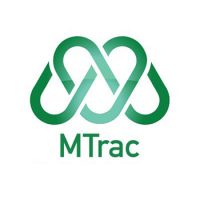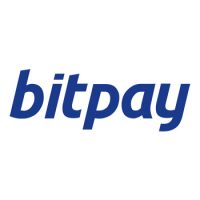Blockchain
Conflux Network event in Shanghai examines blockchain use in international trade and exchange

China continues to explore the potential benefits of blockchain technology despite its well-known dislike of speculative digital asset trading. This week, representatives from the Conflux Network project announced they had participated in a demonstration meeting for a “super-large-scale blockchain basic platform for the Belt and Road” in Shanghai.
Other attendees at the event on March 30 included representatives from the China Academy of Information and Communications Technology, Shanghai Jiao Tong University, Fudan University, and Shanghai Maritime University. According to Conflux Network’s
announcement, others from China’s Industrial Development Promotion Center of the Ministry of Industry and Information Technology and the Shanghai Science and Technology Commission were also present.
Launched in November 2020, Conflux Network describes itself as a “PoW/PoS hybrid blockchain without barriers.” Like BSV blockchain, it claims “unmatched scalability,” security, low fees, a focus on openness but with regulatory compliance, and parallel transaction processing using “tree graphs” to lower confirmation times. Its native asset is the $CFX token.
Conflux also said the event was based on a discussion of requirements related to China’s international “Belt and Road” initiative, a government program to streamline physical and electronic trade routes. The aim was to develop a blockchain platform and demonstration applications that fulfilled these needs, supporting “multi-country deployment and multi-subject collaborative supervision” and “cross-border cooperation in the economic, trade and cultural fields.” (Any open-blockchain network would support these functions.)
Some technology press outlets claimed the event was further proof the Chinese government remains interested in blockchain technology despite its speculative asset and mining bans over the years (which it is). However, this event should not be seen as an official government endorsement of any one blockchain over others. Its use of the term “Belt and Road” in the event’s title is simply stating its focus and should not be taken as a claim to be an official component of the B&R initiative.
Yes, China is still looking at blockchain
To be fair, Chinese authorities have never dismissed blockchain technology, despite years of the “China bans BTC” media trope. Their main objection was always to the wild market speculation (and associated scams) that came with digital assets. With increasing amounts of new wealth in the population forming a relatively naive retail investment market, China had valid concerns that millions could lose their life savings trading digital trinkets—and there had already been examples of this. There were also concerns that block reward mining operations were exploiting energy subsidies in some regions to enrich themselves.
China has maintained an interest in blockchain technology development despite its restrictions on ICOs and other speculative digital assets. The country has hosted several conferences over the years aimed at exploring what other benefits blockchain could provide.
The People’s Bank of China (PBoC) has conducted its own research into using digital currencies since 2014—the same year the first “China bans Bitcoin” rumors arose—and for several years hinted it was developing a CBDC (central bank digital currency) of its own at some point.
That currency, officially named “digital renminbi (RMB)” and also commonly called the “digital yuan” and “e-CNY” became the first CBDC-like asset to undergo public use trials in 2020. E-commerce and IT firms Alibaba (NASDAQ: BABA) and Tencent (NASDAQ: TCTZF) joined in, as did Huawei, JD.com, and credit card company UnionPay, as well as big-brand merchants.
Even though the digital RMB gets frequent press in blockchain industry media, it does not run on a blockchain base. The PBoC has also said the currency is intended to make local cash transactions easier in daily life, but it isn’t intended to replace bank account savings. The central bank has also said the digital RMB shouldn’t be used internationally and (in answer to other rumors) isn’t meant to replace globally-used currencies like the U.S. dollar.
Source: coingeek.com
The post Conflux Network event in Shanghai examines blockchain use in international trade and exchange appeared first on HIPTHER Alerts.
Blockchain
Blocks & Headlines: Today in Blockchain – May 9, 2025 | Robinhood, Solana, Tether, China, Women in Web3

Today’s blockchain landscape pulses with innovation, expansion and strategic jockeying. From established trading platforms laying the groundwork for international tokenized US asset markets to fresh efforts empowering women in Web3, the industry is evolving at frantic pace. Solana-based tokenization pathways, China’s state-driven blockchain masterplan and Tether’s push onto new Layer-1 rails further underscore diversification. In this daily op-ed, we unpack five major developments—examining what they mean for DeFi growth, NFT marketplaces, regulatory contours and the ongoing quest for greater inclusivity in crypto.
1. Robinhood’s European Blockchain Trading Ambitions
News Summary
Robinhood Markets Inc. is reportedly constructing its own blockchain infrastructure to facilitate trading of U.S. equities and other assets in European markets. Insiders suggest the project seeks to leverage distributed-ledger technology for settlement efficiency, near-real-time clearing and reduced reliance on legacy central counterparties. The move signals Robinhood’s ambition to transcend its domestic brokerage roots and capture European retail and institutional order flow.
Key Details
-
Infrastructure Build: A private, permissioned ledger governed by Robinhood and selected counterparties.
-
Asset Scope: U.S. equities, ETFs and potentially tokenized debt instruments.
-
Regulatory Interface: Engagements with the U.K. Financial Conduct Authority (FCA) and European Securities and Markets Authority (ESMA) to align on custody and market-making rules.
-
Timeline: Internal pilots slated for Q4 2025, with public rollout in mid-2026.
Analysis & Opinion
Robinhood’s pivot underscores a broader industry trend: exchanges and brokerages striving to “own the rails” rather than simply interface with existing clearinghouses. By internalizing settlement on a bespoke blockchain, Robinhood hopes to slash settlement times from T+2 to near-instant, a boon for liquidity providers and high-frequency traders. However, risks include the complexity of cross-border regulatory compliance and the operational challenge of maintaining robust on-chain and off-chain reconciliations.
From a DeFi convergence standpoint, Robinhood’s ledger could bridge traditional and decentralized finance, enabling tokenized margin lending and programmable corporate actions directly on-chain. Should Robinhood open permission to DeFi protocols, we may witness new hybrid liquidity pools that blend CEX order books with AMM liquidity. This would mark a milestone in mainstream DeFi adoption—and potentially pressure incumbents like Nasdaq to innovate their own on-chain settlement layers.
Source: Bloomberg
2. Women in Web3: Cultivating Greater Gender Diversity
News Summary
A recent deep-dive from Cointelegraph spotlights the persistent gender gap in blockchain and crypto. Despite Web3’s ethos of decentralization, women represent less than 20 percent of crypto investors and under 10 percent of core development teams. The article outlines initiatives—from targeted grants and incubation programs to mentorship networks—aimed at lowering barriers and attracting more female talent.
Key Details
-
Current Statistics: Women account for approximately 17 percent of crypto traders globally; in development, the share dips below 8 percent.
-
Notable Initiatives:
-
Women in Blockchain Fund: USD 50 million allocated for early-stage female founders.
-
Global Web3 Sisters Network: Mentorship platform pairing novices with veteran executives.
-
University Partnerships: Scholarships for women studying blockchain engineering and cryptography.
-
Analysis & Opinion
Web3’s promise of equal-opportunity innovation rings hollow if half the population remains sidelined. Heightened grant funding and mentorship can help, but systemic change requires cultural shifts within DAOs, core teams and investor circles. Projects and protocols must adopt policies—like blind code reviews, diversity hiring quotas and inclusive governance frameworks—to ensure sustainable participation.
Moreover, as the industry grapples with regulatory scrutiny, diverse leadership can foster better risk management and community trust. Women leaders have often been at the forefront of compliance, ethics and consumer protection—even in traditional finance—qualities sorely needed in crypto’s maturing phase. Token projects that embed gender-diverse advisory boards may see stronger reputational profiles and wider community buy-in.
Source: Cointelegraph
3. SOL Strategies: Tokenizing Shares on Solana
News Summary
SOL Strategies, a financial-services startup, is exploring a pathway to tokenize private and publicly traded shares on the Solana blockchain. Their recently filed whitepaper proposes a framework where equity is represented as SPL tokens, enabling fractional ownership, 24/7 trading and programmable dividend distributions.
Key Details
-
Token Standard: Extension of Solana Program Library (SPL) with “Equity Token” schema.
-
Custody Model: Licensed custodian holds underlying shares; token holders have legal claim via smart-contract link.
-
Compliance Layer: On-chain KYC/AML middleware to restrict token transfers to approved wallets.
-
Pilot Partners: Early engagements with two mid-cap European tech firms eyeing capital-raising via tokenization.
Analysis & Opinion
Tokenized equity stands to revolutionize capital markets by lowering minimum investment thresholds and unlocking global liquidity. On Solana, with its sub-second finality and low fees, fractional shares could trade seamlessly—outpacing Ethereum’s scalability challenges. Yet the critical hurdle lies in regulatory acceptance: will securities regulators view these tokens as bona fide equity or as unregistered securities?
SOL Strategies’ integrated custody approach could mollify regulators, replicating existing T+2 standards while enabling T+0 settlement on-chain. Should they secure regulatory sandbox approvals in the U.K. or Singapore, other blockchains—like Stellar and Polkadot—may race to develop similar tokenization toolkits. For DeFi protocols, tokenized equities could become collateral in lending pools, further intertwining traditional and decentralized finance.
Source: Newsfile Corp.
4. China’s Blockchain Playbook: Infrastructure, Influence & New Frontiers
News Summary
The Center for Strategic and International Studies (CSIS) published an extensive analysis of China’s state-driven blockchain strategy. Beyond its digital yuan rollout, Beijing is investing in cross-border infrastructure, influencing global standards bodies and forging Belt and Road blockchain corridors across Asia, Africa and Latin America.
Key Details
-
Key Initiatives:
-
BSN 2.0: Blueprint for national and international consortium chains.
-
International Standards: Active lobbying in ISO/TC 307 for governance models favoring state-actors.
-
Tech Diplomacy: Blockchain MOUs with Pakistan, Indonesia and several African union members.
-
-
Strategic Goals: Extend digital yuan acceptance, export Chinese ledger tech, shape global governance.
Analysis & Opinion
China’s multi-pronged approach signals blockchain’s emergence as a theater of geopolitical competition. By undercutting SWIFT dependency and offering turnkey consortium-chain solutions, Beijing enhances its financial influence in Belt and Road countries. Western governments and multinationals must navigate this blockchain bifurcation—between open public rails and permissioned state-backed consortia.
For crypto projects, the CSIS report offers both caution and opportunity. While the digital yuan may corner state-aligned corridors, decentralized networks remain resilient by design. Projects focusing on interoperability—such as Polkadot bridges and Cosmos IBC—can link fragmented chains and preserve open value transfer. Investors should monitor on-chain metrics in emerging markets, as Chinese-backed consortium chains gain traction in cross-border trade finance.
Source: CSIS
5. Tether Expands Stablecoin Reach to 196 Million Users via Kaia
News Summary
Tether has launched USDT on the Kaia blockchain, bringing its flagship stablecoin to Kaia’s user base of approximately 196 million. Kaia, a burgeoning Layer-1 optimized for high-throughput mobile applications, opens new corridors for USDT in gaming, remittances and micro-trading in emerging markets.
Key Details
-
Technical Integration: USDT issued as a native Kaia token, supported by Tether’s reserve-backing audit framework.
-
User Impact: Near-zero fees for micro-transactions; sub-second confirmation times even on mobile networks.
-
Partnership Scope: Integration with Kaia’s wallet SDK and gaming marketplace; joint launch of an educational DApp for fiat-on-ramp literacy.
Analysis & Opinion
By deploying on Kaia, Tether diversifies its blockchain footprint beyond Ethereum, Tron and Solana, underscoring a multi-chain thesis for stablecoin ubiquity. Emerging-market users—often plagued by volatile local currencies—stand to benefit immensely from a mobile-first, low-cost remittance rail. Moreover, Kaia’s developer incentives may spawn DeFi lending dApps collateralized by USDT, fueling localized credit markets.
Yet healthy competition among blockchains for stablecoin volume could concentrate risk: reserve transparency, network stability and regulatory compliance will differentiate winners. Tether’s public attestations and reserve audits are critical, but as US regulators intensify scrutiny on stablecoin giants, projects deploying on smaller chains may face fresh legal complexities around money-transmission licensing.
Source: Bitcoin.com
Conclusion & Key Takeaways
-
Institutional On-ramp Acceleration: Robinhood’s European chain signals major brokerages view blockchain as core infrastructure—not mere gadget.
-
Inclusivity Imperative: Women’s underrepresentation remains a blindspot; targeted grants and cultural reforms are needed for equal Web3 participation.
-
Tokenization Tide: Solana’s high-speed rails may host the next wave of equity tokens, bridging capital markets and DeFi.
-
Geopolitical Battlegrounds: China’s consortium chains and digital-yuan corridors illustrate how blockchain is reshaping global influence.
-
Stablecoin Multichain Strategy: Tether’s Kaia integration reflects the logic of diversifying rails to reach underserved, mobile-first users.
As blockchain advances, the interplay between technological innovation, regulatory frameworks and social inclusion will define whether the next chapter of crypto fulfills its vision of open, equitable finance—or replicates old hierarchies in digital garb. Today’s headlines underscore that the path forward lies in cross-chain interoperability, proactive policy-shaping, and a relentless focus on broadening the community that stewards and benefits from these transformative networks.
The post Blocks & Headlines: Today in Blockchain – May 9, 2025 | Robinhood, Solana, Tether, China, Women in Web3 appeared first on News, Events, Advertising Options.
Blockchain
Blocks & Headlines: Today in Blockchain – May 7, 2025 | Coinbase, Riot Games, Curve DAO, Litecoin, AR.IO

Today’s blockchain and cryptocurrency landscape is as dynamic as ever, with marquee partnerships, industry-wide reckonings, and groundbreaking applications reshaping how we think about digital assets. In this op-ed style daily briefing, we explore five major developments from May 6 – 7, 2025:
-
Coinbase & Riot Games Forge Esports Alliance
-
“Too Many Blockchains?” Industry Introspection
-
Blockchain’s Health-Tech Revolution
-
Valour Adds Curve DAO & Litecoin ETPs in the Nordics
-
AR.IO Enables Credit-Card Onramps for Web3 Identity & Hosting
Through concise yet detailed coverage, we analyze each story’s implications for blockchain, cryptocurrency, Web3, DeFi, and NFTs. Welcome to your Blocks & Headlines daily briefing—where opinion meets analysis.
1. Coinbase & Riot Games Forge Esports Alliance
Source: Coinbase Blog
Date: May 6, 2025
In a landmark partnership that bridges digital finance with digital competition, Coinbase has been named the exclusive cryptocurrency exchange and official blockchain technology partner of Riot Games’ global League of Legends and VALORANT esports events. Starting with the VCT Masters tournament in Toronto on June 7, Coinbase will integrate “live Econ Reports” and “Gold Grind” segments into broadcasts, offering running analyses of in-game currency flows, alongside exclusive digital drops like emotes and icons redeemable by viewers.
Opinion: This move is a masterstroke for mainstream crypto adoption. Esports’ digitally native fanbase aligns perfectly with blockchain’s ethos of transparency and community governance. Coinbase’s embrace of in-game analytics not only educates viewers on micro-economies but also paves the way for future on-chain game mechanics—potentially unlocking true digital ownership of skins and items as NFTs. Expect other exchanges to follow suit or risk missing out on Gen Z’s next frontier of fandom.
2. “Too Many Blockchains?” Industry Introspection
Source: Blockworks
Date: May 6, 2025
As venture capital floods yet another dozen Layer-1 protocols each quarter, seasoned observers are questioning sustainability. Donovan Choy of Blockworks highlights that new chains like Camp Network, Unto, and Miden collectively raised north of $70 million in the past week alone—despite Sui’s market-cap spike lacking any commensurate fee revenue. While some attribute this proliferation to speculative greed chasing the elusive L1 premium, others credit genuine technical divergence—differing visions on execution environments, MEV capture, and data-availability layers.
Opinion: The free market appears to be self-correcting: L1 valuations are compressing, and public markets are already signaling fatigue. Yet, technical fragmentation has its merits—competition drives innovation in consensus, sharding, and gas-fee economics. The looming challenge is application-chain misalignment: developers face choice paralysis and liquidity fragmentation. A pivot toward cross-chain composability—and perhaps the rise of federated execution environments—will determine which chains survive the next cycle. Investors should look for interoperability roadmaps rather than mere tokenomics hype.
3. Blockchain’s Health-Tech Revolution
Source: DataHorizzon Research via OpenPR
Date: May 7, 2025
Blockchain in healthcare is projected to surge from a $4.57 billion market in 2023 to $34.7 billion by 2033 (CAGR 22.9%). Key drivers include:
-
Data Integrity & Security: Immutable ledgers ensure tamper-proof electronic health records, bolstering HIPAA and GDPR compliance.
-
Interoperability: Permissioned smart contracts automate cross-institutional data access, alleviating EHR fragmentation.
-
Supply-Chain Traceability: Real-time drug tracking combats counterfeits and streamlines recalls.
-
Claims Automation: Shared ledgers reduce fraud and billing lags via automated smart-contract adjudication.
-
Research Collaboration: Timestamped trial data and consent forms create verifiable audit trails.
Leading players—IBM Watson Health, Guardtime, Longenesis, Chronicled, BurstIQ, and more—are moving beyond pilots in Estonia and Merck’s vaccine cold-chain projects toward enterprise-scale rollouts.
Opinion: Healthcare’s conservative nature makes blockchain’s strides here particularly noteworthy. The confluence of AI analytics with secure datasets promises predictive diagnostics powered by immutable provenance. Yet, regulatory uncertainty and integration with legacy EHR platforms remain significant hurdles. The winners will be those who offer turnkey compliance frameworks and hybrid on-chain/off-chain models that respect “right to be forgotten” laws while preserving auditability.
4. Valour Adds Curve DAO & Litecoin ETPs in the Nordics
Source: GlobeNewswire (via GlobeNewswire and CoinCentral)
Date: May 7, 2025
DeFi Technologies’ subsidiary Valour has listed single-asset SEK-denominated ETPs for Curve DAO (CRV) and Litecoin (LTC) on Sweden’s Spotlight Stock Market—bringing its Nordic ETP lineup to over 67 products on the path to 100 by year-end. Upcoming listings include Tron (TRX), Stellar (XLM), and leveraged Bitcoin (BTC 2×) and Ethereum (ETH 2×) products.
Opinion: ETPs bridge traditional capital markets with on-chain assets, offering regulated wrappers for institutional and retail investors. Valour’s Nordic expansion underscores Europe’s leadership in crypto security tokenization. However, as ETP count balloons, product fatigue may set in. Success lies not in sheer quantity but in thematic curation and transparent fee structures—particularly for DeFi-native tokens like CRV, where governance risk and protocol upgrades can materially impact value.
5. AR.IO Enables Credit-Card Onramps for Web3 Identity & Hosting
Source: Chainwire (as published by MENAFN)
Date: May 6, 2025
AR.IO—the world’s first permanent cloud network built on Arweave—has launched “Turbo,” an open-source bundler that lets users purchase Arweave credits via credit card for its ArNS domain‐name and web-hosting service. ArNS domains are immutable smart contracts on Arweave, offering permanent websites and on-chain identities without renewal fees, served by 400+ decentralized gateways.
Opinion: Simplifying fiat → crypto onramps remains a critical barrier for mainstream Web3 adoption. By integrating credit-card payments, AR.IO lowers friction for developers and businesses wanting censorship-resistant hosting. The true long-term play is embedding real-world payment rails into decentralized infrastructure—setting a precedent for other ledger-based services (e.g., Filecoin, IPFS pinning). If AR.IO can combine permanency with user-friendly billing, we may witness a tipping point in Web3’s shift from hobbyist experiments to enterprise solutions.
Conclusion
Today’s slate of headlines spans from consumer-facing esports innovations to deep industry self-reflection, from life-saving healthcare applications to sophisticated investment vehicles, and finally, critical infrastructure enabling mainstream onramps. Across every sector—gaming, finance, healthcare, asset management, and infrastructure—the recurring theme is bridging gaps:
-
On-chain & off-chain: through fiat onramps and traditional ETP listings
-
New chains & legacy systems: via interoperability and hybrid architectures
-
Speculation & real-world utility: with tangible ROI in healthcare and esports
For enthusiasts and professionals alike, the imperative is clear: focus on solutions that marry blockchain’s core benefits—transparency, security, decentralization—with seamless user experiences and regulatory alignment. Only then will we see blockchain and crypto transcend niche fervor to become indispensable pillars of tomorrow’s digital economy.
The post Blocks & Headlines: Today in Blockchain – May 7, 2025 | Coinbase, Riot Games, Curve DAO, Litecoin, AR.IO appeared first on News, Events, Advertising Options.
Blockchain
Colb Asset SA Raises $7.3 Million in Oversubscribed Round to Bring Pre-IPO Giants to Blockchain
-
Blockchain7 days ago
HODL 2025: Blockchain’s Brightest Minds. All in Dubai
-

 Blockchain Press Releases7 days ago
Blockchain Press Releases7 days agoInterlace Debuts at Token2049 to Accelerate Web2-Web3 Integration Across MENA
-

 Blockchain Press Releases7 days ago
Blockchain Press Releases7 days agoFrom Exchange to Ecosystem Builder: MEXC Celebrates 7th Anniversary at TOKEN2049 Dubai with $300M Ecosystem Development Fund Launch
-

 Blockchain Press Releases3 days ago
Blockchain Press Releases3 days agoHTX Premieres USD1 Stablecoin Globally, Partnering with World Liberty Financial to Forge a New Era of Decentralized Economy
-

 Blockchain Press Releases7 days ago
Blockchain Press Releases7 days agoBybit and St. Paul American Scholars School Furthers Partnership Commitment in Bybit’s HQ Visit
-

 Blockchain6 days ago
Blockchain6 days agoUnitedStaking.com Launches Advanced Crypto Staking Platform with Global Reach and Real-World Impact
-

 Blockchain Press Releases3 days ago
Blockchain Press Releases3 days agoJuCoin made a global impact at TOKEN2049 Dubai, advancing its ecosystem with the “Peak Experience” vision and JuChain’s robust tech.
-

 Blockchain1 day ago
Blockchain1 day agoBlocks & Headlines: Today in Blockchain – May 7, 2025 | Coinbase, Riot Games, Curve DAO, Litecoin, AR.IO

























